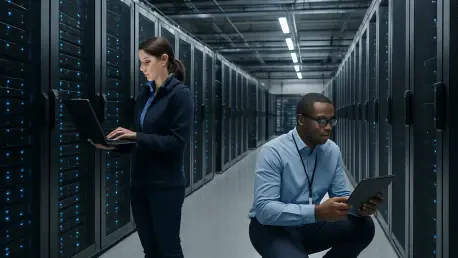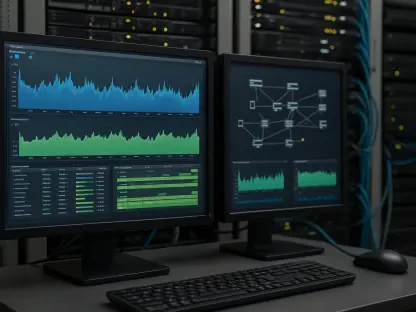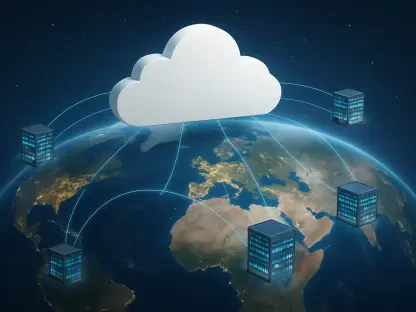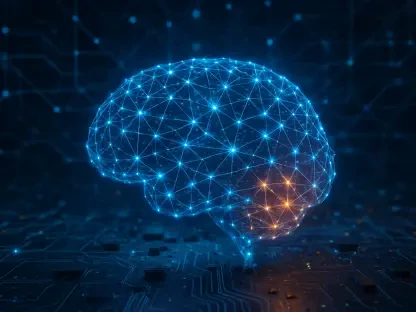I’m thrilled to sit down with Matilda Bailey, a networking specialist with a deep focus on cutting-edge technologies in cellular, wireless, and next-gen solutions. With her extensive expertise in the evolving landscape of digital infrastructure, Matilda offers invaluable insights into the workforce challenges and opportunities shaping the data center industry. Today, we’ll dive into the pressing talent gap, the skills needed for future engineers, and how communities and training programs play a pivotal role in fueling the growth of data centers.
Can you start by sharing your perspective on the most significant workforce challenges the data center industry is facing right now?
Absolutely. The biggest challenge is simply the shortage of skilled talent. The data center industry is growing at an incredible pace, driven by AI and digital transformation, but we don’t have enough trained professionals—think construction workers, electricians, and engineers—to keep up. This talent gap is a real bottleneck for scaling capacity, especially in the U.S., where demand is skyrocketing. It’s not just about filling positions; it’s about finding people who can adapt to the complex, evolving needs of these facilities.
How do you see the explosion of AI and digital infrastructure influencing the demand for skilled workers in this space?
The impact is massive. AI workloads and cloud expansion are pushing data centers to grow at a rate we’ve never seen before—some estimates suggest 10 to 15% annual growth in the U.S. alone. This means we need more workers, and fast, to build and maintain these facilities. Electricians, engineers, and other trades are in high demand because every new data center requires expertise in power, cooling, and automation systems. The pressure is on to not just hire, but to hire people who can handle the tech-driven complexity of modern infrastructure.
What specific skills do you think data center professionals need to master to manage both physical and digital systems effectively?
It’s a blend of technical know-how and adaptability. On the physical side, they need a strong grasp of mechanical and electrical systems—things like power distribution and cooling setups are critical. On the digital side, familiarity with automation and software that manages these systems is becoming non-negotiable. Beyond that, problem-solving and the ability to learn quickly are key because technology like AI facility management or liquid cooling is constantly changing the game. It’s about being both hands-on and tech-savvy.
Why is it so crucial for data center workers to think across disciplines rather than specializing in just one area?
Data centers are incredibly interconnected environments. If you’re only focused on, say, electrical systems, you might miss how they interact with cooling or automation. Workers who can think holistically—understanding how mechanical, electrical, and digital systems work together—add so much more value. They can troubleshoot issues faster, optimize performance, and anticipate problems before they escalate. This cross-disciplinary mindset is what keeps a data center running smoothly, especially under the strain of modern demands.
How would you describe the ideal data center engineer of the future in terms of their skills and background?
I envision someone who’s a bit of a hybrid—deeply trained in both physical infrastructure and digital tools. They’d have a solid foundation in electrical or mechanical engineering but also be comfortable with software for monitoring and automation. Cross-training will be essential, so they can pivot between hardware and digital systems. On top of that, they’d be lifelong learners, ready to adapt to innovations like AI-driven management or sustainable cooling methods. It’s about versatility and a curiosity to grow with the industry.
What strategies can the industry use to attract talent from related fields like commercial construction or utilities to address the talent shortage?
We need to cast a wider net and show these professionals that their skills are already a great fit. For instance, electricians or HVAC techs from construction or utilities already understand large-scale infrastructure. The industry can attract them by highlighting career growth opportunities, competitive pay, and the chance to work on cutting-edge tech. Outreach programs, job fairs, and partnerships with trade associations in those sectors can also help bridge the gap and get the word out about data center roles.
What types of training or upskilling programs do you believe are most effective for helping workers from adjacent industries transition into data center roles?
Hands-on, targeted programs work best. Short, intensive courses that focus on data center-specific needs—like power systems or cooling tech—can quickly bring workers up to speed. On-the-job training or apprenticeships are also incredibly effective, as they let people learn while doing. Pairing that with access to online resources or certifications for digital tools ensures they’re ready for the tech side too. The key is making training practical and accessible, so workers can jump in without feeling overwhelmed.
Can you tell us about any partnerships with trade schools or colleges that have proven successful in building a pipeline of data center talent?
I’ve seen some great examples where data center developers team up with trade schools to create tailored programs. These courses focus on the exact skills needed, like electrical systems or automation, and often include internships or job placement support. Community colleges are also stepping in with data center-specific tracks, blending classroom learning with real-world exposure. These partnerships are a win-win—they prepare students for in-demand jobs and give the industry a steady flow of qualified talent.
How are data center developers using internal training to keep their teams updated on emerging technologies like liquid cooling or AI facility management?
Many developers are investing in robust internal training programs to keep their workforce ahead of the curve. They’re bringing in experts to teach about new tech like liquid cooling, which is becoming critical for high-density AI workloads. Some are also using simulations or virtual tools to train staff on AI-driven management systems without risking live operations. Regular workshops and access to vendor certifications ensure employees stay current, which is vital in an industry where tech evolves so rapidly.
What role do local communities play in supporting the growth of data centers, especially in regions emerging as new industry hubs?
Communities are absolutely central. In areas transitioning from manufacturing or agriculture to data center hubs, local support can make or break growth. They provide the workforce—think local tradespeople or young professionals eager for careers. Communities also shape the infrastructure around data centers, like housing or transportation, which are crucial for operations. When locals embrace these facilities, it creates a partnership where both sides benefit through jobs and economic development.
How can data center growth contribute to local economies beyond just job creation?
Beyond jobs, data centers can be a huge boost through tax revenue, which can fund schools, roads, and public services. They also drive demand for local businesses—think suppliers, contractors, or even restaurants catering to workers. In the long term, they can attract other tech industries to the area, creating a ripple effect of economic growth. When done right, data centers become a cornerstone for transforming a region’s financial landscape.
What challenges arise when trying to balance data center expansion with local needs like housing or resource management?
It’s a delicate balance. Rapid expansion can strain local resources—think power grids or water for cooling—potentially causing tension with residents. Housing is another big issue; an influx of workers can drive up costs or create shortages if planning lags behind. Transportation infrastructure often struggles to keep up too. The challenge is ensuring growth doesn’t outpace what a community can sustain, which requires careful coordination and transparent communication with locals.
In what ways are developers collaborating with local governments or programs to tackle workforce development and community concerns?
Many developers are stepping up by partnering with local governments on workforce initiatives, like funding trade programs or offering apprenticeships for residents. They’re also working on community improvement plans—think investments in housing or infrastructure to ease the burden of growth. Regular town halls or joint committees with local leaders help address concerns around resources or environmental impact. These collaborations build trust and ensure data centers are seen as partners, not just outsiders.
Why do you believe investing in people is as critical as investing in physical assets like power or land for the future of data centers?
Without skilled people, even the best infrastructure is useless. You can have all the power and land in the world, but if there’s no one to build, operate, or maintain a data center, projects stall. People are the backbone—they drive innovation, solve problems, and keep systems running. Investing in training and career growth ensures a sustainable workforce, which is just as vital as any physical resource for meeting the industry’s long-term demands.
What steps can the industry take to create stronger career paths for workers, helping them evolve from roles like electricians to automation experts?
It starts with clear pathways and support. The industry can offer structured programs where workers, like electricians, gain skills in automation through on-the-job training or certifications. Mentorship from senior staff can guide them into more advanced roles. Employers should also provide incentives—higher pay or promotions—for upskilling. By showing workers they can grow into tech-heavy or hybrid positions, we make data center careers more appealing and retain talent longer.
What is your forecast for the future of workforce development in the data center industry over the next decade?
I see a future where workforce development becomes a core focus, not an afterthought. Over the next decade, I expect tighter integration between industry and education—more specialized programs in schools and robust internal training. We’ll likely see a surge in cross-trained professionals who can handle both physical and digital challenges. Technology will play a bigger role in training too, with virtual reality or AI tools simulating complex scenarios. If we prioritize people now, we’ll build a resilient workforce ready for whatever innovations come next.









